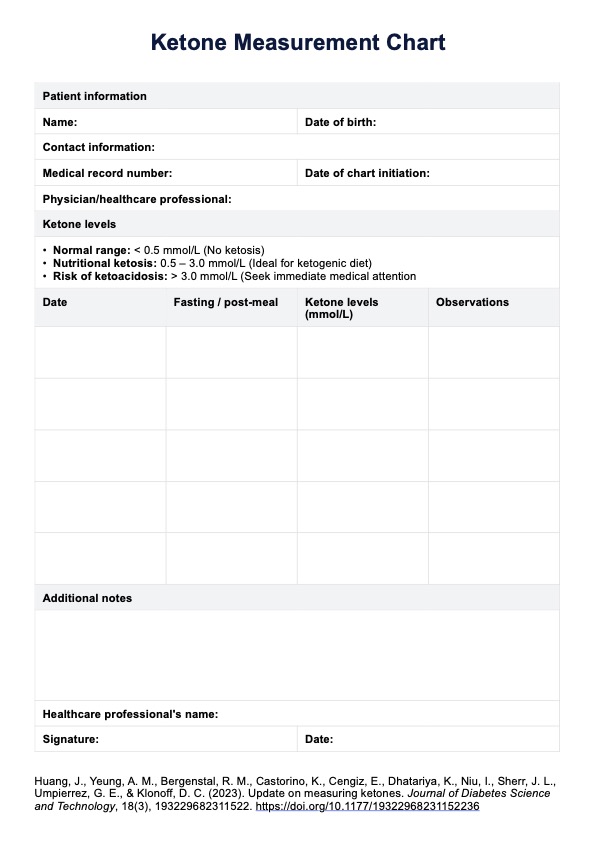The Ketone Measurement Chart Template is designed to help healthcare professionals and patients track and monitor ketone levels effectively. This tool provides a systematic way to record ketones levels for ketosis, aiding in the assessment of metabolic states, particularly for those following a keto diet or experiencing conditions like diabetic ketoacidosis (DKA).

Ketone Measurement Chart
Optimize health tracking with our Ketone Measurement Chart Template. Easily monitor ketone levels, track progress, and make informed lifestyle adjustments.
Ketone Measurement Chart Template
Commonly asked questions
The chart allows users to visualize ketone levels for ketosis. Generally, levels below 0.5 mmol/L indicate normal glucose metabolism, while levels between 0.5 and 3.0 mmol/L signify nutritional ketosis. Levels above 3.0 mmol/L may indicate a risk of DKA and require immediate medical attention.
Yes, the chart can be utilized alongside various testing methods, such as keto meter chart readings, which measure beta-hydroxybutyrate directly from the blood. It is important to ensure that results are accurately recorded to facilitate effective monitoring.
EHR and practice management software
Get started for free
*No credit card required
Free
$0/usd
Unlimited clients
Telehealth
1GB of storage
Client portal text
Automated billing and online payments











